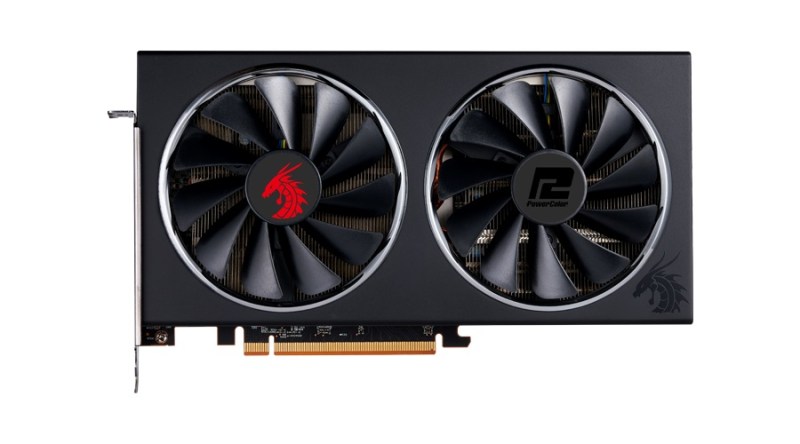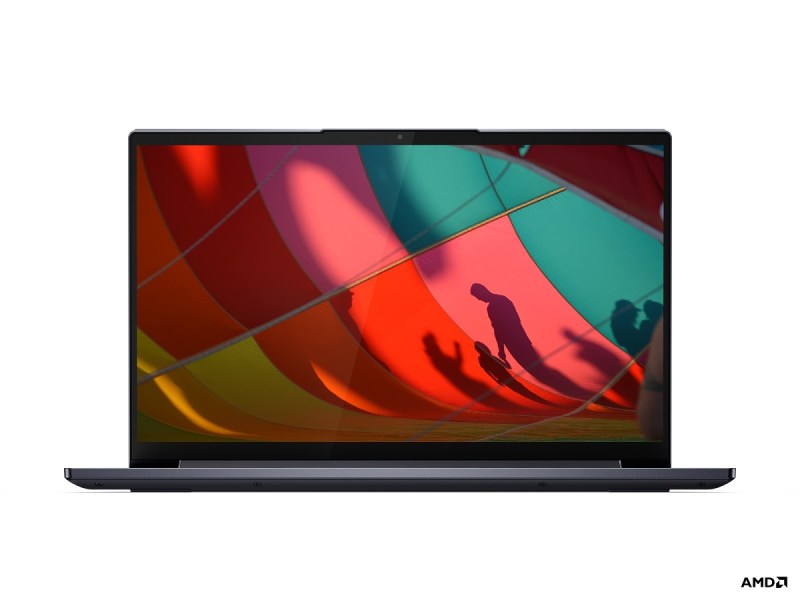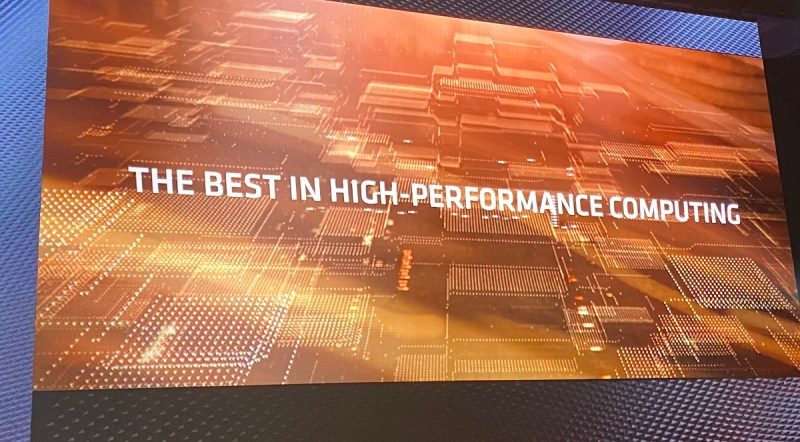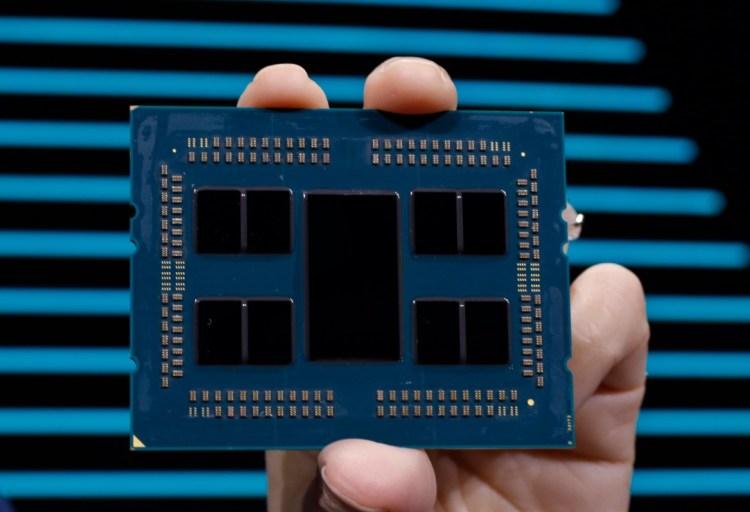It’s been a long ride for Mark Papermaster, chief technology officer at Advanced Micro Devices. But the journey to challenge Intel in the race to design, make, and ship the best microprocessors on the planet is paying off.
At CES 2020, the big tech trade show in Las Vegas, AMD was on a victory lap. The company showed off its new Ryzen 4000 mobile processors, based on its Zen 2 architecture and cost-efficient 7-nanometer manufacturing process. I talked to Papermaster at CES, and he was gratified to see 7nm manufacturing roll out across the entire AMD product line, including the new Radeon 5600 graphics processing units.
Coming soon is a monstrous, $4,000, 64-core AMD Threadripper processor that will claim the title of the most powerful microprocessor. And AMD is working on designing the next-generation processor architecture, dubbed Zen 3. I joined in a group interview with AMD CEO Lisa Su, and I also had an opportunity to sit down with Papermaster one on one.
Here’s an edited transcript of our interview.
June 5th: The AI Audit in NYC
Join us next week in NYC to engage with top executive leaders, delving into strategies for auditing AI models to ensure fairness, optimal performance, and ethical compliance across diverse organizations. Secure your attendance for this exclusive invite-only event.

Above: Mark Papermaster is chief technology officer at Advanced Micro Devices.
VentureBeat: It’s different from other times that AMD has had a shot. If you look at it from a tech point of view, what was important to you from [your announcements here at CES]? What technologies are the most important that have come out now?
Mark Papermaster: I’m excited about the products we’re announcing at CES. The course of 2020 is really completing the rollout of 7-nanometer [manufacturing] across our full product line. We made a huge bet several years ago on 7nm and married that foundry technology bet with our road map, which was centered on bringing the highest performance to our CPUs and GPUs. We’re super excited, with Ryzen 4000, to now bring that 7nm with the high-performance Zen 2 cores, with optimized graphics cores, into the notebook form factor, including the 15-watt ultrathin market. That’s very exciting for us.
VentureBeat: What’s been hard about bringing that out on 7nm? Is it more of a production-driven schedule? Are there a lot of technological steps that you’re taking with each product launch?
Papermaster: The decision of our product rollout is based on a combination of our road map planning internally. We need to plan our implementations so we can spread them across our product lines. The decisions as far as which product lines go first are a combination of our partnerships across our technology teams and business unit teams with our OEMs, and with the market planning.
What we’re able to do with 7nm is have the fastest product launch we’ve ever had in AMD history. You look at the volume ramps we achieved. You don’t do that by launching every product on the same day. You want to thoughtfully look at the market. You look at what we did with our first launches in desktop. We demonstrated leadership in performance around Zen 2. If you look across Amazon or any of the retailers, Ryzen is holding down most if not all — it’s all of the top 10 spots on Amazon for highest-selling processors. [It was] clearly the right call to first take that leadership in CPU. It drove very high-volume adoption and demonstrated the prowess of Zen 2.
We then followed that with introducing our Navi graphics in 7nm. We showed the kind of graphics processing efficiency that we could bring with the new generation Navi architecture, again with 7nm, because 7nm with both CPU and GPU is allowing us to double the kind of computation in the same power envelope that we had in the previous processor node. We followed that with the server in the fall, and now we’re very excited to bring an integrated CPU and GPU Ryzen 4000.

Above: PowerColor Red Dragon uses AMD’s Radeon RX 5600 XT.
VentureBeat: How much credit goes to TSMC?
Papermaster: It’s a full partnership. We’re a different optimization point for the foundry than a smartphone, because of the kind of high performance we demand. It requires a deep partnership across AMD design teams and the TSMC process technology designers. That’s a bet we made several years ago. It was a very deep partnership. The aspects that allow that kind of density improvement — we can get a lot more processing per square millimeter in the same power envelope. A lot of that benefit comes from process technology. And then there’s significant elements, equally significant, that come from the design approach.
If you look at the Ryzen 4000, it has even further power management features beyond what we had in our previous generation. When you’re not actually playing a game, when you’re not using all the features of that PC, we have very fine-grained controls that gate off the power. That’s key to getting us the battery life and efficiency we have. It’s process technology and design.
VentureBeat: Some people pointed out that you’re able to get into some of these premium laptops. That hasn’t been AMD’s territory.
Papermaster: That’s absolutely right. Getting into the 15-watt and the ultrathin space is very exciting. It took all of that design and engineering, the partnership across the processor design and the foundry.
VentureBeat: Logically, this turns into market share. How do you think about what’s important there?
Papermaster: We’ve established a great momentum in 2019 in terms of market share gain. With the product announcements you see today, you’ll see continued growth as we expand the segments we can play in. Adding the ultrathin is very significant. You’ll see about a dozen platforms in this quarter leveraging our new Ryzen 4000, and you’ll see more to come as the year progresses. You’ll see continued growth in the markets that we launched across last year. The story of AMD has been providing that high-performance product, providing value to our customers. A steady share gain is coming as a result.

Above: Asus ROG Zephyrus G14 laptop uses latest Ryzen 4000 processor.
VentureBeat: On the APU side, what is the progression there? You’re designing more custom things for Microsoft and Sony. A desktop APU, is that logically the thing that follows?
Papermaster: When you look at our APUs, they’re very tightly integrated CPU and GPU, like the Ryzen 4000 we just announced. Certainly, our semi-customs and game consoles today are very tightly coupled APUs. Our partners for the next generation of game consoles will announce details over 2020 as they roll out. But generally, your point is well made. That is, the kind of workloads — not just in notebook, but in desktop — more and more want to leverage very fast across CPU and GPU computing.
You already see the kind of direction we’re on there with SmartShift, which we announced at CES this year. SmartShift is in a notebook configuration, in the first product we rolled out, allowing you to very seamlessly optimize across the CPU and GPU based on what you as the user need to optimize your experience. Those types of tight integrations across CPU and GPU, you’ll indeed see those move across our full product line and into desktop applications over time.
VentureBeat: If there’s a real estate division on your chips, how much of it is GPU versus something — what do you notice about where the emphasis is and where the choices are?
Papermaster: In a notebook configuration, obviously you always have to have a balance: CPU and GPU performance versus size of battery and length of usage that the battery can support. That’s a constant balance. What’s exciting about Ryzen 4000 is we’ve now reached an implementation point where Ryzen 4000 can support triple-A gaming with a monolithic die and a highly optimized implementation. But users really demand a whole range of computation. They want flexibility in the amount of GPU they want.
A high-end gamer wants to be able to add graphics capability. That’s what we support. SmartShift is a great example of an enabling technology. Even in a notebook configuration, you can add discrete graphics and optimize that experience. Then you look at desktop. That’s where the hardcore enthusiasts are, and that’s where you can choose. How many cores of CPU do I want? Now, with the 3990X, do I want 64 cores, 128 threads of CPU? Accordingly, how many GPU cores do I want to marry with that? With PCIe Gen 4, we’ve amped up the kind of bandwidth and connectivity between the CPU and GPU that you can deploy across our Ryzen plus Radeon road map.

Above: Lenovo Yoga Slim uses AMD’s latest mobile Ryzen processor.
VentureBeat: If there’s something different about this generation of gamers and users, it seems like they’re uploading so much now. They’re creating content at the same time they play games. That changes the workload. How is that fitting with what you’ve designed?
Papermaster: The trend of users toward — first, from a consumption standpoint, they want higher resolution. They want very quick response when they’re gaming, because it’s the difference between winning and losing. The consumption is going up, and then the generation of content is going up. People want to share their gaming in real time. That certainly surprised me personally, how popular it’s become to watch others play games.
Of course, then you have the growth of pure content creation. The engines that we provide — the reason we focus on high performance is to focus on those trends, both in gaming and content creation. We want to enable a much broader population to be able to afford that kind of high performance in CPU and GPU that enables a better consumption experience and a better content generation experience.
You do need, to have the best experience, excellent bandwidth to the web. That’s why we work very closely with our partners to make sure we’re very tightly integrated with Wi-Fi, and as 5G takes off we’ll fully support 5G connectivity.

Above: AMD is hoping for a victory lap in 2020.
VentureBeat: As far as spreading into new areas, how do you think about what markets are interesting, places where you’re not so big right now?
Papermaster: We have a huge opportunity as far as share gain in the base markets we’re in, across PC, for content consumption and creation, all the way through server applications. We’ll remain incredibly focused on growing share as we continually improve our high-performance products there. But if you look at each of those markets, there are adjacent segments that are very exciting.
You look at the growth AMD has had in supplying to the cloud today, with our second-generation Epyc. You see our share going up and you see growing adoption. The cloud — you’re starting to see wider and wider connectivity as 5G starts to take hold in 2020. You’ll see a need for more computation at the edge, where certain applications can’t absorb the delay going all the way back to a datacenter. They need more local analytics and local optimization. That’s an emerging area we’re very excited about. We’re working with our OEMs and partners in the vertical there to bring that same high-performance technology.
We’re very excited about the advent of 8K displays — 8K content is starting to come to reality in 2020. The Olympics will be broadcast in 8K this year. That’s very exciting to us at AMD. As you know, we’ve geared up our GPUs today to be capable of seamlessly processing and delivering 8K content.
VentureBeat: Do you foresee self-driving cars and the chips that drive those becoming important to AMD in the way they are to Nvidia?
Papermaster: When we look at self-driving cars, I think all of us realize that true self-driving capability — level 4 autonomous driving and beyond — is taking longer than anticipated to come to fruition. There are a number of challenges. They will all be tackled in time. One of the challenges is that a fully self-driving capability demands almost a datacenter processing capability in the auto. We’re interested in that. We think it aligns with our datacenter strategy. We’re looking to the longer term as far as full self-driving capability, making sure that if there’s market demand for our products there, we can provide that.
VentureBeat: Nvidia launched their 360Hz G-Sync display here, 6 times a normal refresh rate. On the FreeSync side, is this another feature you think you have to go after? Are gamers going to be interested in that? Or is it a category where nobody’s really going to be able to tell the difference?
Papermaster: We’re very pleased with our partnerships with the display vendors. You see broad adoption of FreeSync now. We’re going to continue that close partnership with our display partners and our gaming content development partners. We’re focused on experience. We’ll continue as you’ve seen us evolve FreeSync. We love it. There’s broader adoption. We’ve made the standards open, and they’ve been adopted by the standards committees. That’s a real endorsement that we’re on the right approach.

Above: Kohler’s Touchless Toilet debuts at CES 2020.
VentureBeat: How open does hardware have to be? You look at RISC-V coming along, following behind Arm. They’re saying that they’ll offer more choice. Before this, maybe people didn’t know that they wanted hardware to be this open, the same way Linux is on the software side.
Papermaster: For application development, what’s most important is that you have an open software ecosystem. That’s what the applications are built on. What that software layer — if done right, it should hide the unique characteristics of the hardware underneath. Because of the long lead time and detailed optimization of silicon engines, it allows a rich ecosystem of tailored and optimized silicon.
In my mind, it’s less important what instruction set architecture you’re running. What’s most important is, what degree of performance can you provide at the best economic point? Those are the winners on the hardware side. What you’ve now seen, with the advent of AI frameworks and hardware extraction layers between that software and hardware, it’s opened up innovation on hardware to optimize implementation, and a more standard and open approach to build applications on top.
It’s great if there are more players. Of course, RISC-V is out there. Arm has already been out there. You’re starting to see more tailored ASIC designs out there. I love it. Competition is a good thing because it drives innovation. We now have such momentum of open software stacks that sit on top. As you know, at AMD we’ve completely embraced open software and interface to applications. Our API approach at AMD is a very open API.
VentureBeat: On the semi-custom side, has anything surprised you as far as what people come to you asking for?
Papermaster: Our semi-custom business is there for customers who have a high volume and want to leverage the engines we have, along with unique technology and IP they have. They want to have a very close integration. That continues. When you look at the markets we’re in, tailored products that may make sense, that’s a natural direction for the semi-custom business.
VentureBeat: Are there any other topics at the top of your mind?
Papermaster: There’s a meta-theme that you’re seeing at CES. It underscores the strategy that we’re on at AMD. When you look across all of the segments we talked about — you go and walk the floor at CES, what you’re seeing is this acceleration of having smarter devices everywhere, of having those devices be connected, and the demand that all of us have for better computation, more contextually aware computation, and a more lifelike human-computer interface.
It’s a trend we’ve been talking about at AMD for years. Now, what I’m excited about this year at CES — we’re seeing, again, major strides toward making that vision a reality. We’re doing everything we can at AMD to hasten that progression.
VentureBeat: There is a big thing I’ve been wondering about. We have Moore’s Law slowing down at a time when the demand for datacenters is gigantic. Then we have climate change to worry about, and we have IoT coming on board at the same time and creating all this demand that wasn’t there before. I wonder if that combination of things is going to doom the planet.
Papermaster: You can look at it that way, but I’ll flip it the other way. I’m an optimist by nature. What opportunity do we have, when we have more data available to us than we’ve ever had, and more computation than we’ve ever had? You look at what was announced by the Department of Energy with the Frontier supercomputer, where we’re partnering with HPE Cray to deliver 1.5 exaflops of computing in 2021. If you marry that with, as you said, this massive amount of data we’ve never had before, what analytics can we run that we never have before that can improve society? What can we do, based on that kind of analysis, that can inform us on how to contain climate change? What can we do in drug analysis that can leverage the data telemetry that’s expanding today, running deeper analytics to improve therapies and health care going forward?
I look at it the other way. There are two sides to the coin. I really am excited about how technology can help address those concerns we all share. Technology can be used in very negative ways. Technology has caused climate change. It’s a fair criticism. But we can point that same technology to address those ills.


